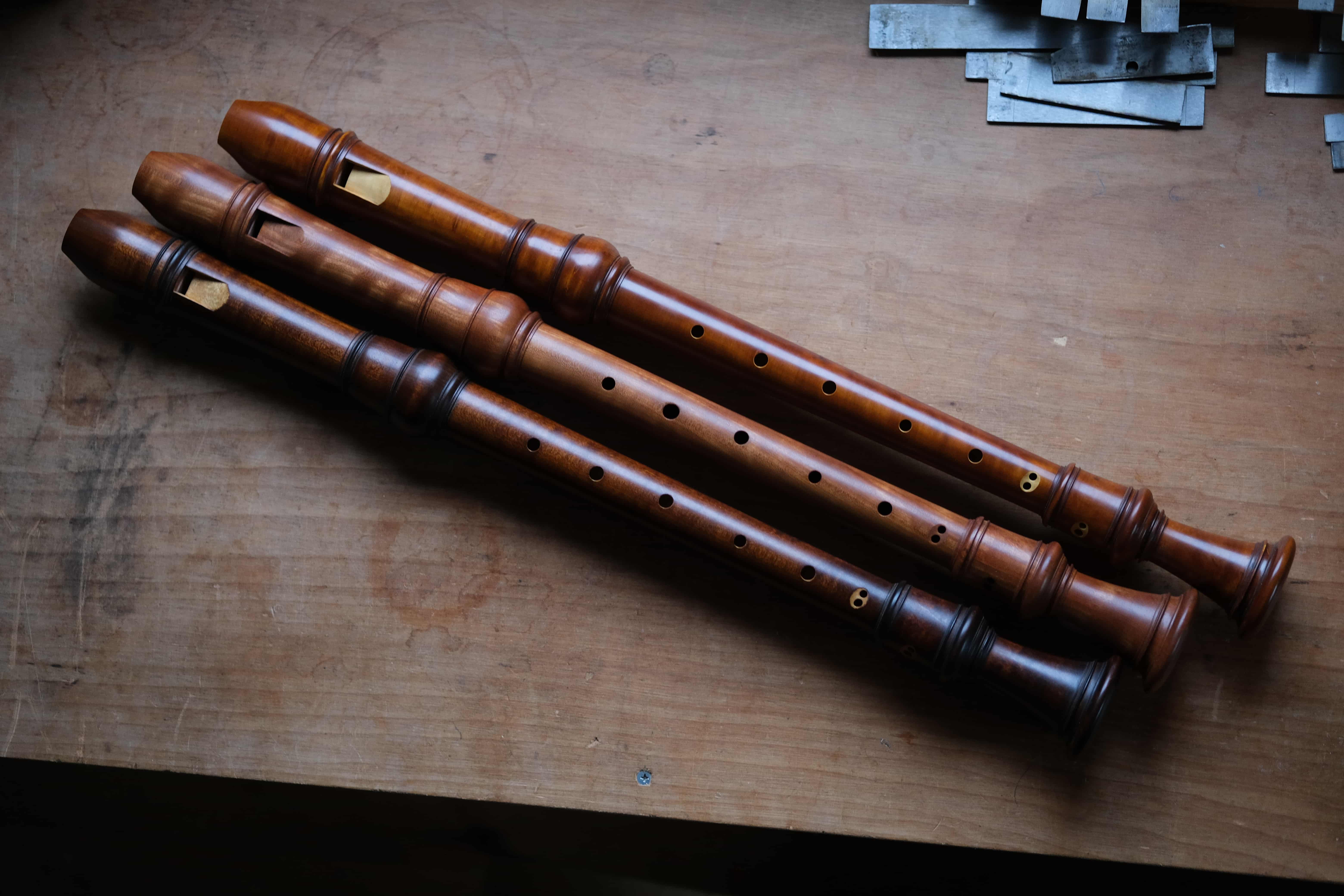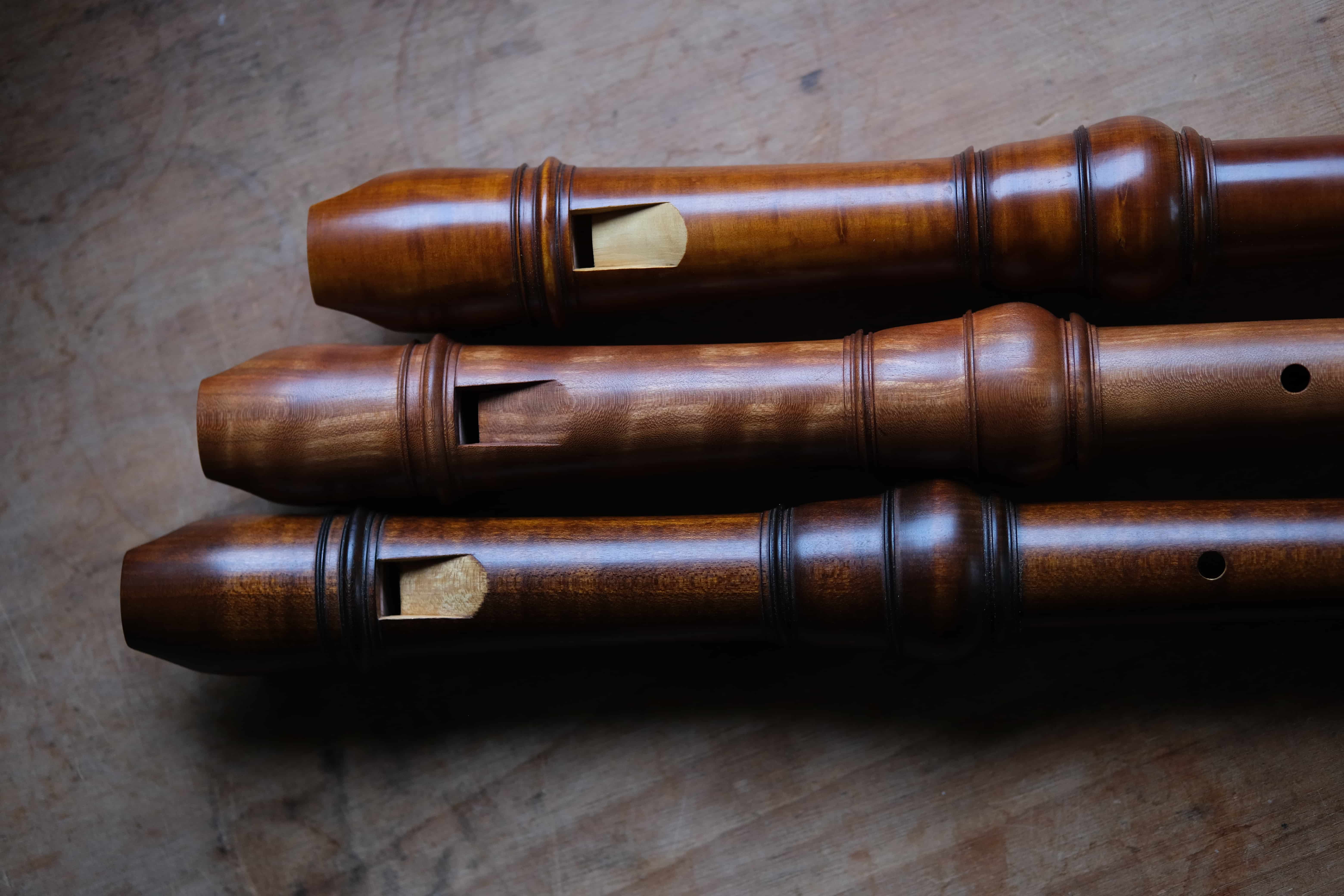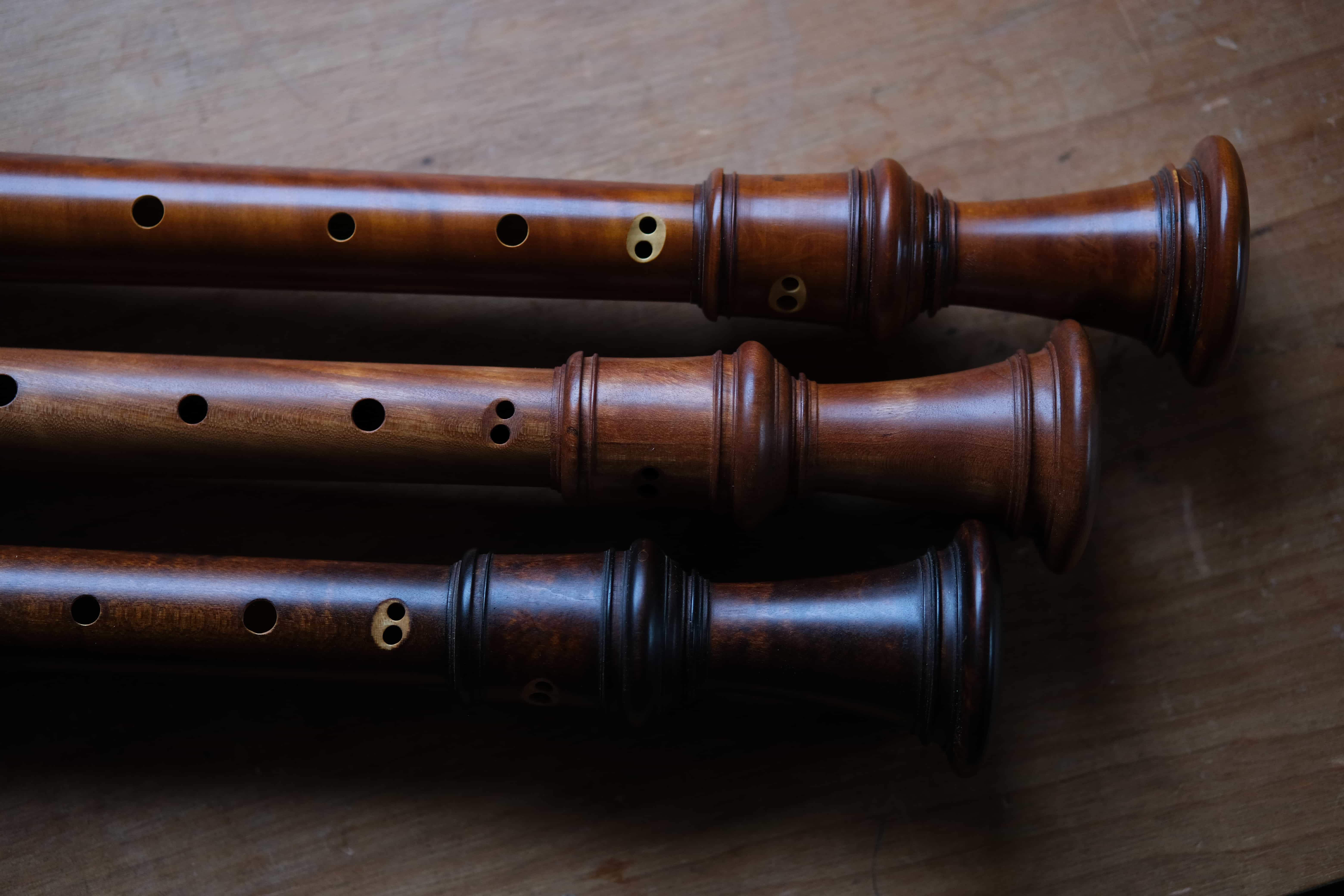Baroque tenor after anon. | 415 Hz |
| €2250 incl. VAT | |
There are quite a lot of historical tenors still in existence. Many more than voice flutes. They seem to have been quite popular. Whether they were used as solo instruments or consort instruments or both, we do not know. Music specifically written for tenor recorder is scarce.
The advantage of a tenor is that it is in the same range as the violin, oboe and traverso. The tenor therefore blends really well and can play a lot of repertoire for these instruments. The sound is richer and deeper than a voice flute, which is especially beautiful in French music. Pieces with a lot of flats are far easier to play. Stanesby Jr. even wrote a pamphlet promoting the use of the tenor recorder over the alto and voice flute.

A lot of historical tenors have a relatively narrow bore to facilitate maintaining breath support, have smaller and closer together finger holes and making it easier to reach the high notes. This is a disadvantage to the volume and the low register. I therefore chose to base my tenor on an anonymous tenor in Leipzig. It has somehow gotten the label ‘Italian’, but to me the turning is obviously German. Very reminiscent of J.C. Denner and Schell.
The instrument has a very wide bore and a short keyless foot. It has a convincing solistic sound but can still blend in with other instruments or other recorders. Despite not having a key for the low C it is not too difficult to play; relatively speaking of course.


